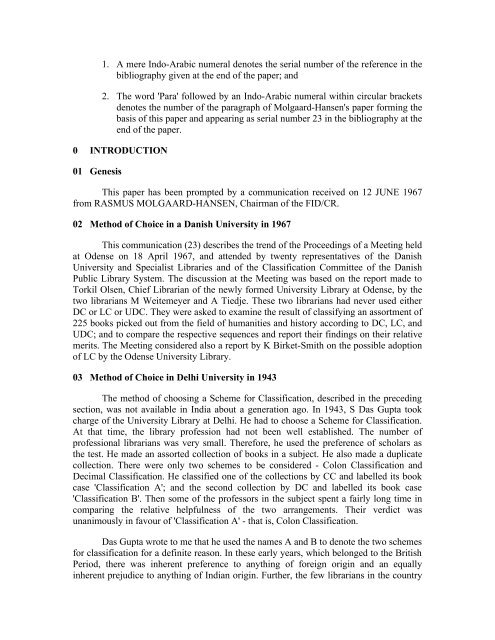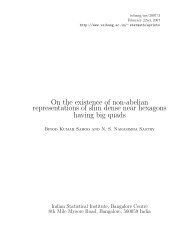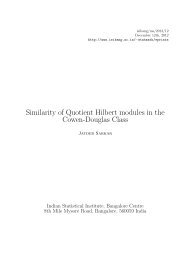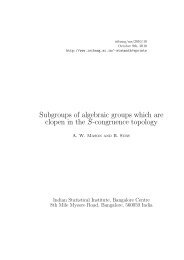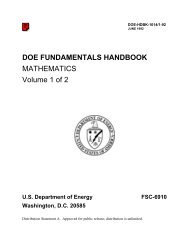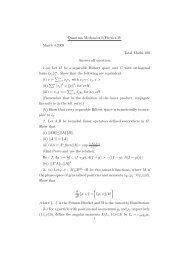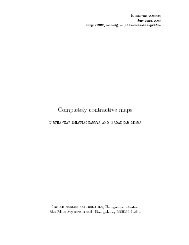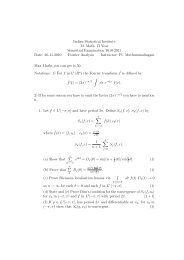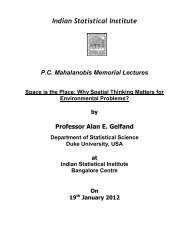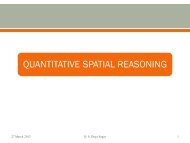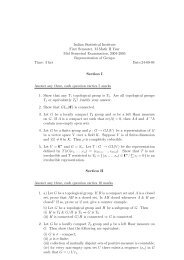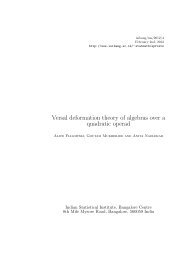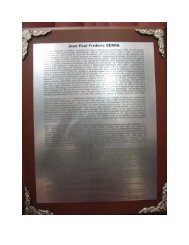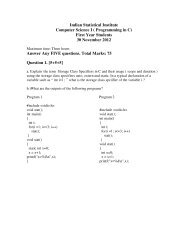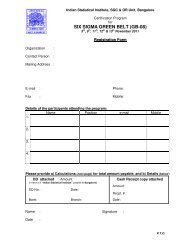CHOICE OF SCHEME FOR CLASSIFICATION - Indian Statistical ...
CHOICE OF SCHEME FOR CLASSIFICATION - Indian Statistical ...
CHOICE OF SCHEME FOR CLASSIFICATION - Indian Statistical ...
You also want an ePaper? Increase the reach of your titles
YUMPU automatically turns print PDFs into web optimized ePapers that Google loves.
1. A mere Indo-Arabic numeral denotes the serial number of the reference in the<br />
bibliography given at the end of the paper; and<br />
2. The word 'Para' followed by an Indo-Arabic numeral within circular brackets<br />
denotes the number of the paragraph of Molgaard-Hansen's paper forming the<br />
basis of this paper and appearing as serial number 23 in the bibliography at the<br />
end of the paper.<br />
0 INTRODUCTION<br />
01 Genesis<br />
This paper has been prompted by a communication received on 12 JUNE 1967<br />
from RASMUS MOLGAARD-HANSEN, Chairman of the FID/CR.<br />
02 Method of Choice in a Danish University in 1967<br />
This communication (23) describes the trend of the Proceedings of a Meeting held<br />
at Odense on 18 April 1967, and attended by twenty representatives of the Danish<br />
University and Specialist Libraries and of the Classification Committee of the Danish<br />
Public Library System. The discussion at the Meeting was based on the report made to<br />
Torkil Olsen, Chief Librarian of the newly formed University Library at Odense, by the<br />
two librarians M Weitemeyer and A Tiedje. These two librarians had never used either<br />
DC or LC or UDC. They were asked to examine the result of classifying an assortment of<br />
225 books picked out from the field of humanities and history according to DC, LC, and<br />
UDC; and to compare the respective sequences and report their findings on their relative<br />
merits. The Meeting considered also a report by K Birket-Smith on the possible adoption<br />
of LC by the Odense University Library.<br />
03 Method of Choice in Delhi University in 1943<br />
The method of choosing a Scheme for Classification, described in the preceding<br />
section, was not available in India about a generation ago. In 1943, S Das Gupta took<br />
charge of the University Library at Delhi. He had to choose a Scheme for Classification.<br />
At that time, the library profession had not been well established. The number of<br />
professional librarians was very small. Therefore, he used the preference of scholars as<br />
the test. He made an assorted collection of books in a subject. He also made a duplicate<br />
collection. There were only two schemes to be considered - Colon Classification and<br />
Decimal Classification. He classified one of the collections by CC and labelled its book<br />
case 'Classification A'; and the second collection by DC and labelled its book case<br />
'Classification B'. Then some of the professors in the subject spent a fairly long time in<br />
comparing the relative helpfulness of the two arrangements. Their verdict was<br />
unanimously in favour of 'Classification A' - that is, Colon Classification.<br />
Das Gupta wrote to me that he used the names A and B to denote the two schemes<br />
for classification for a definite reason. In these early years, which belonged to the British<br />
Period, there was inherent preference to anything of foreign origin and an equally<br />
inherent prejudice to anything of <strong>Indian</strong> origin. Further, the few librarians in the country


